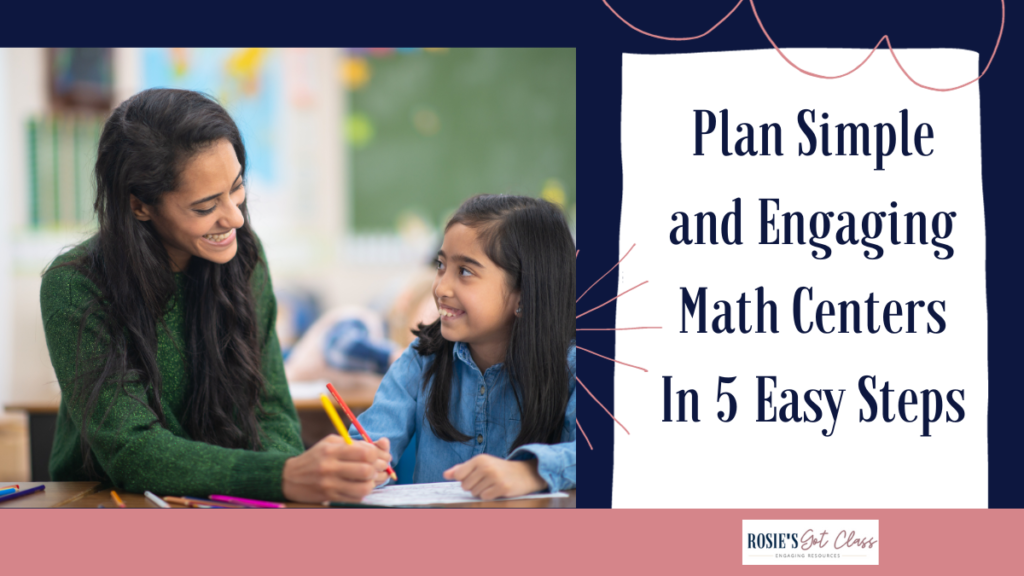
Plan Simple and Engaging Math Centers in 5 Easy Steps
I love math centers! Do you feel the same way? Have you tried using them in your classroom? Have you tried them for a week or two and then given up because they are too much work? I felt this way for a while, but then I changed my mind after I figured out how to easily plan them. I also realized they are a fantastic way to engage students and provide them with the opportunity to practice and reinforce essential math skills.
Math centers are a favorite part of the day for my students. I think it helps that we move every 15 minutes to change activities. By rotating through the activities, they know they will get a turn to complete all of the math centers for the day. One thing that has helped me with planning my math centers is to use a classroom transformation theme for the week during math centers. My class loves them, and it helps us practice math skills. If you would like to try a simple classroom transformation, this FREE sample of a zoo classroom transformation will help your students practice their addition facts within 20. It also means one of your math centers is already planned for the week. Put your name and email in the boxes, and I will send it to you right away!
Math centers help me incorporate a variety of activities within my math lesson. They help create a learning environment that caters to different learning styles and abilities. Here are my five simple and effective steps to set up engaging math centers. During this time of your school day, your students will participate in learning time with the teacher, skill practice, games, and computer-based lessons or practice.

Step 1: Determine Learning Objectives
Before I begin planning my math centers, I look at the needs of my students along with the math curriculum for my district. I also identify any skills that need extra practice and reinforcement. This helps guide the content and activities I select for each center.
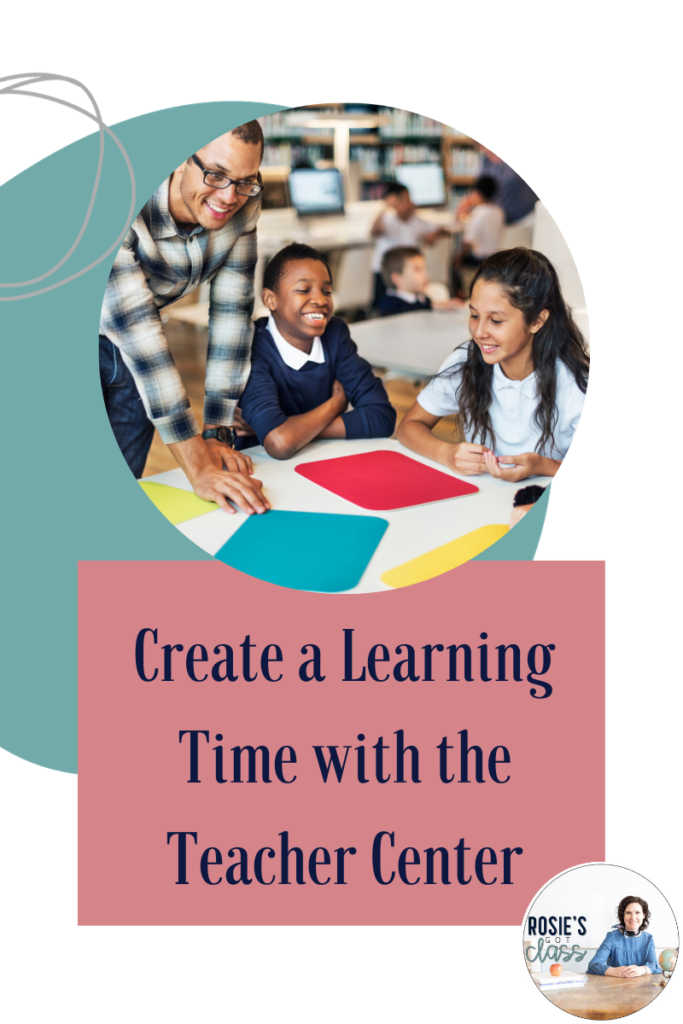
Step 2: Create a Learning Time with the Teacher Center
Before we begin our math center time, we have a whole group math lesson. Then we begin our math center time. Since we have already had a lesson, this gives me the opportunity to give extra direct instruction with teacher-led activities. I love doing this with a smaller group because I am able to give extra support and scaffold instruction when needed, or I can increase student understanding with students who are ready for deeper knowledge.
Here’s what I like to do:
Mini-Lesson: I begin with a brief, focused mini-lesson to explain the concept or skill, provide examples, and answer questions.
Guided Practice: This is when I can provide targeted assistance and ensure they grasp the concept.
Hands-on Activities: I love using manipulatives to strengthen the concept. When I am with a smaller group, it helps me really see the understanding of my students.
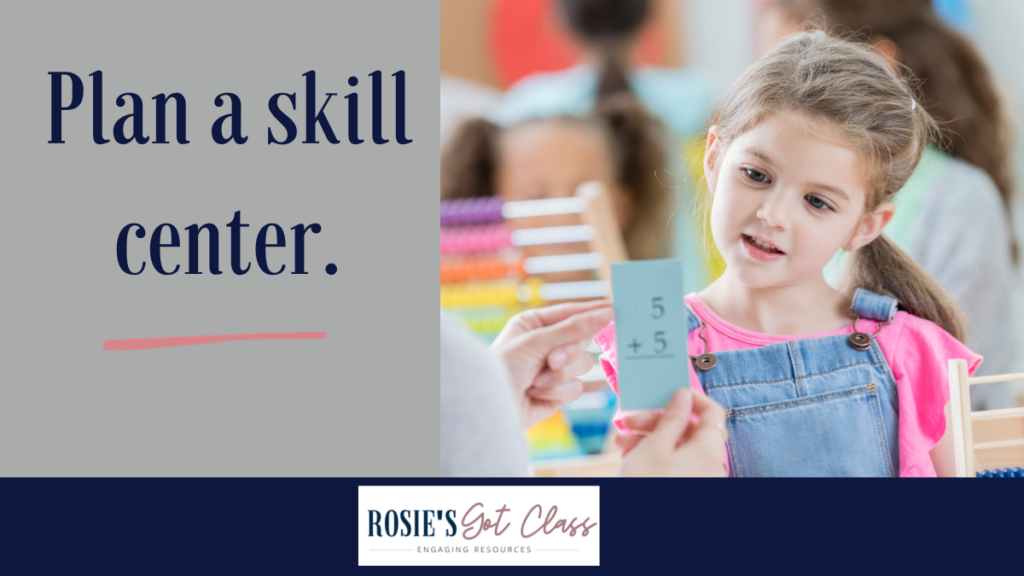
Step 3: Plan a Skill Practice Center
In this center, my students can practice the math skill or concept they learned during the whole group lesson or review concepts that need additional practice. Here are some of the methods I use to structure it:
- Worksheet or Workbook: Depending on the needs of my class, I use the workbook from the curriculum provided by my school district or an extra practice page that is appropriate for each student’s skill level.
- Task Cards: I love to create task cards with math problems that students can solve independently or with a partner.
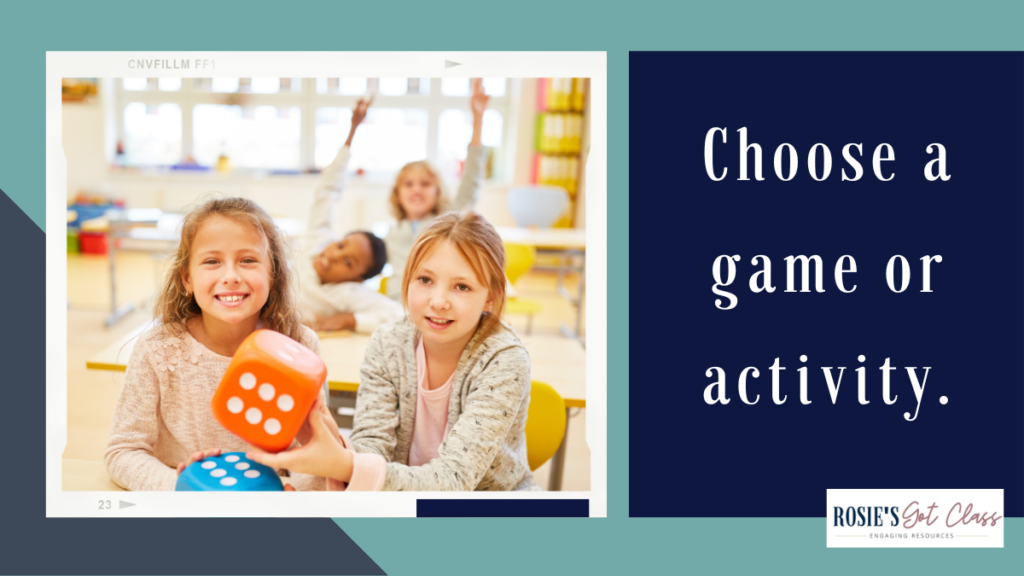
Step 4: Choose a Game or Activity
Games make math fun and engaging, and they are a valuable addition to your math centers. Here are some ideas:
- Board Games: I like to use common games that students are familiar with such as Math Bingo or Math Jeopardy or Math Puzzles.
- Card Games: Using decks of cards is a fun way to play math games such as “War” to practice addition or subtraction.
- Dice games: I love dice games because the students are having so much fun, and they forget they are actually practicing math.
- I have also used a classroom transformation as part of my games or activities. Click here to find out more information about how to do this.

Step 5: Incorporate Computer Lesson Time
Technology can be a powerful tool for reinforcing math skills. If your district doesn’t already have a chosen program for practice math skills, you may want to look at xtramath.org to practice math facts or ixl.com and khanacacemy.org for math lessons. These are some programs I have successfully used.
Other Tips to Help You Be Successful
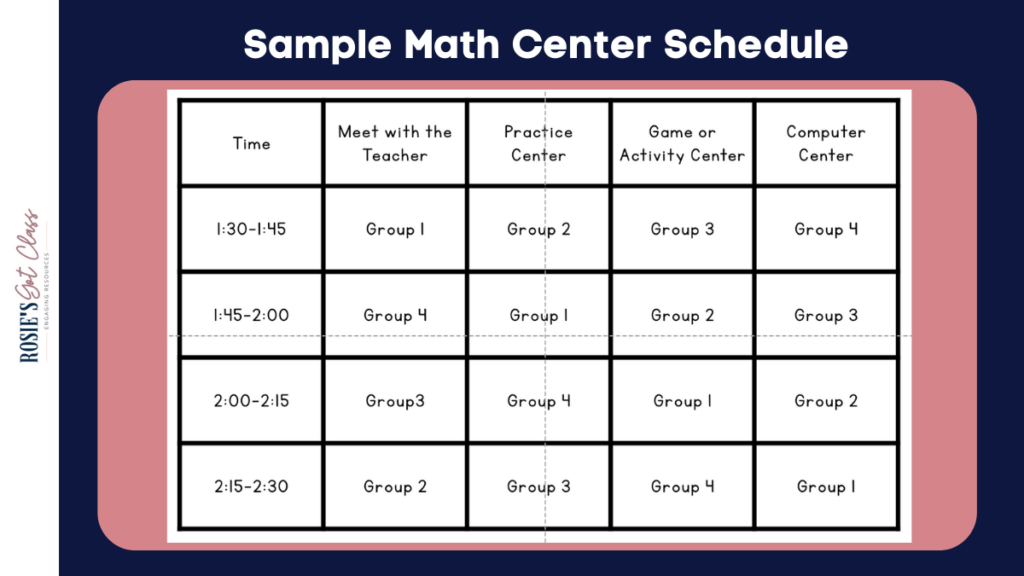
Use a Rotation Schedule
I like to use a rotation schedule. By having a consistent schedule, it helps your students have a variety of learning experiences to keep them focused and engaged in strengthening their skills and understanding. I have tried a few different methods.
- Pocket Chart Idea #1- I have used a pocket chart that listed each group along with the times. When the timer rang, I moved the groups. This worked well when I had a large classroom with a large amount of wall space. The students liked to see how I moved them from one center to another.
- Pocket Chart Idea #2 – I have also used a pocket chart that was smaller, and I moved the centers at the beginning of the week. We worked through the centers each day following the schedule. I Iiked this method because I had it ready at the beginning of the week, and I didn’t need to change it until the week was over.
- Digital Center Rotation – This is the method I am currently using, and I think I really like it. Since my classroom is very small this year with very limited wall space and white board space, this was my only option. I type it up at the beginning of the week, and I use it for the entire week. If my plans need to change, then I can easily change the rotations or make adjustments as needed.
Making a Schedule
When I am making up my schedule, I like to keep in mind a few things. I have my higher students begin with the practice center first because they usually can independently begin the workbook, worksheet, or task cards without extra support. They are the students who usually understand the lesson during the whole group lesson. I train them so they know that if they get frustrated while they are working, they skip the problem, and I will help them when they meet with me. All of the other groups will complete the practice center after they have met with me, and they can usually complete the practice center after receiving extra support from me. If there is something extra tricky, we often complete this together before they work on it independently.
Choose Open Ended Games
When I am planning my games or activities, I like to choose some that are open ended and keep my students interested. Even if they played the game previously, the use of dice or cards makes the game a new game each time it is played. My students also are having fun and forget they are practicing their math skills. This also helps because I don’t have as many things to plan, but my students are strengthening their skills.
Using math centers in your classroom will transform the way your students learn and engage with mathematics. By following these five easy steps, you can plan simple and effective math centers that support all learners and make math fun. I hope you use these 5 easy steps and give math centers a try in your classroom today!
Here are some additional articles you might find helpful.
https://create-abilities.com/setting-up-math-centers/


